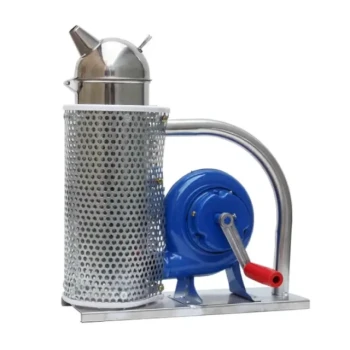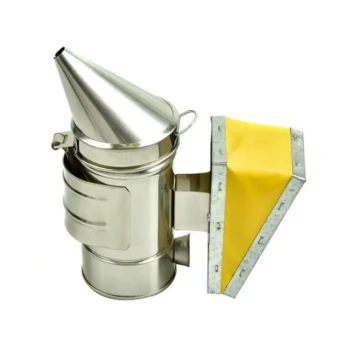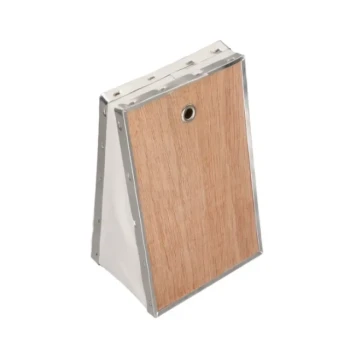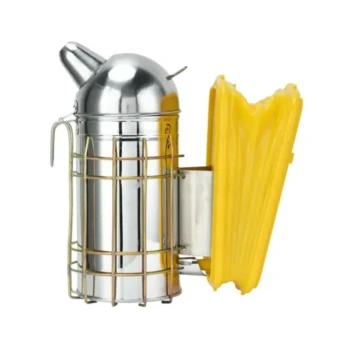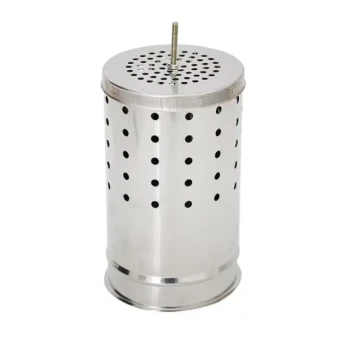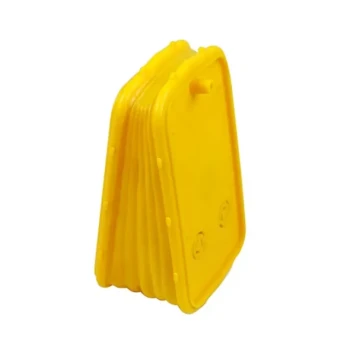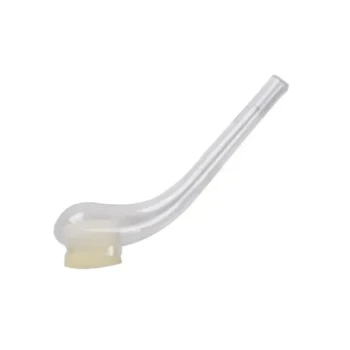To produce effective smoke, you must create a slow, smoldering fire, not a hot, burning one. This is achieved by establishing a small bed of hot coals at the bottom of the smoker, above the grate, and then layering unburned fuel on top. Gentle, consistent puffs from the bellows will then generate the ideal cool, thick, white smoke needed to calm bees without harming them.
The most critical principle of using a bee smoker is moderation. Effective smoke is not about volume; it is about using the right kind of smoke—cool, white, and billowy—sparingly and with purpose to communicate with your bees, not overwhelm them.
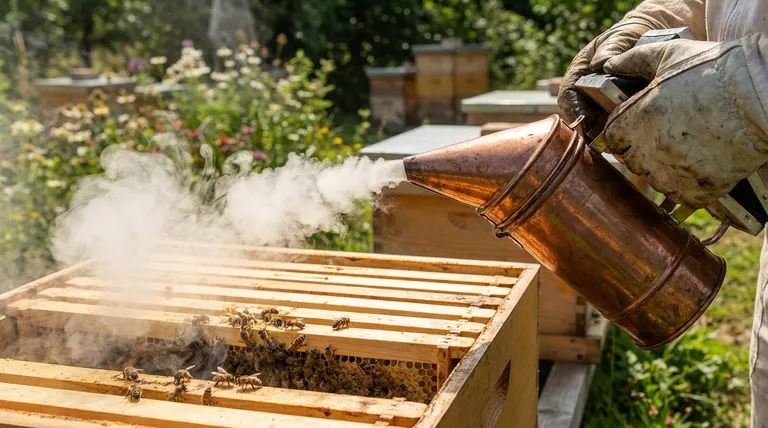
The Principle of Good Smoke: Smoldering, Not Burning
The goal of smoking a hive is to trigger a natural defensive response in the bees. The scent of smoke suggests a potential forest fire, causing them to consume honey in preparation for a possible evacuation. This makes them more docile and less likely to sting.
Defining "Good" vs. "Bad" Smoke
Good smoke is cool, dense, and white. It is produced by smoldering material, not active flames. This is the smoke that effectively calms bees.
Bad smoke is hot, thin, grey, or contains sparks. This is produced by an active, burning fire and will agitate bees, potentially burn their wings, and is less effective at calming the colony.
The Bee's Perspective
A gentle puff of cool smoke is a warning signal. Constant blasts of hot, acrid smoke are perceived as a direct attack, which will make the colony more defensive, not less.
A Step-by-Step Guide to Using Your Smoker
Following a clear process ensures you produce the right kind of smoke every time and maintain control throughout your inspection.
Step 1: Prepare and Layer Your Fuel
Your smoker must be layered correctly. Place a small amount of easily lit starter fuel (like newspaper or pine needles) at the bottom. Once it's lit and forms coals, add your primary, slower-burning fuel on top.
Good fuels include burlap, pine needles, wood pellets, or cotton fibers. The key is that the coals are at the bottom, and the unburned material is on top.
Step 2: Light the Smoker Correctly
Light the starter fuel from the bottom. Pump the bellows gently until you have a small, hot fire that produces a bed of coals.
Once you have coals, add your primary fuel. Continue puffing the bellows until the top fuel begins to smolder and produce thick, white smoke. Do not let it erupt into an open flame.
Step 3: Apply Smoke with Purpose
Before opening the hive, puff a small amount of smoke into the entrance. Wait 30-60 seconds to allow the effect to spread through the colony.
After waiting, crack the lid open slightly and puff a few gentle streams of smoke across the top bars. The goal is to push the guard bees down and away from you.
Always test the smoke's temperature on the back of your hand before applying it to the hive, and keep the smoker at least 5 inches away to avoid harming the bees.
Understanding the Common Mistakes
Using a smoker improperly can be more disruptive than using no smoke at all. Avoiding these pitfalls is crucial for a calm and productive inspection.
Mistake 1: Using Too Much Smoke
Over-smoking a hive is a common error. If you find yourself needing to constantly puff smoke to keep the bees down, it is a sign that they are agitated and you should consider ending the inspection.
Excessive smoke is harmful to the bees' respiratory systems and can irritate your own lungs. Moderation is key.
Mistake 2: Using "Hot" or "Dirty" Smoke
If you see sparks or grey, acrid smoke, your fuel is burning too hot. This is often caused by an open flame inside the smoker.
Tamp your fuel down and restrict airflow by puffing the bellows less frequently. Hot smoke will make bees aggressive and can cause injury.
Mistake 3: Poor Timing and Application
Do not immediately rip the cover off after smoking the entrance. You must give the smoke time to work.
If you get stung, smoke the area of the sting on your suit or skin. This masks the alarm pheromone released by the sting, which would otherwise attract other bees to the same spot.
How to Apply This to Your Hive
Your approach should adapt to the specific situation and the temperament of your colony.
- If your primary focus is a routine inspection: A few gentle puffs at the entrance and another few across the top bars are usually all you need.
- If you are dealing with an aggressive colony: Use smoke more consistently but still gently, applying it ahead of where you are working to keep bees calm.
- If you need to move bees from an area: Use the smoker directionally, aiming puffs of smoke to gently "herd" the bees to where you want them to go.
Ultimately, the smoker is your primary tool for calm and respectful communication with your colony.
Summary Table:
| Aspect | Good Smoke | Bad Smoke |
|---|---|---|
| Temperature | Cool | Hot, with sparks |
| Appearance | Thick, white, billowy | Thin, grey, acrid |
| Effect on Bees | Calms, triggers natural response | Agitates, can cause harm |
| Source | Smoldering fuel | Active, burning fire |
Master the art of the smoker with HONESTBEE. As a trusted supplier for commercial apiaries and distributors, we provide the high-quality, reliable beekeeping equipment you need for efficient and safe hive management. Ensure every inspection is productive with tools designed for professionals. Contact our experts today to discuss your wholesale needs and elevate your beekeeping operations.
Visual Guide
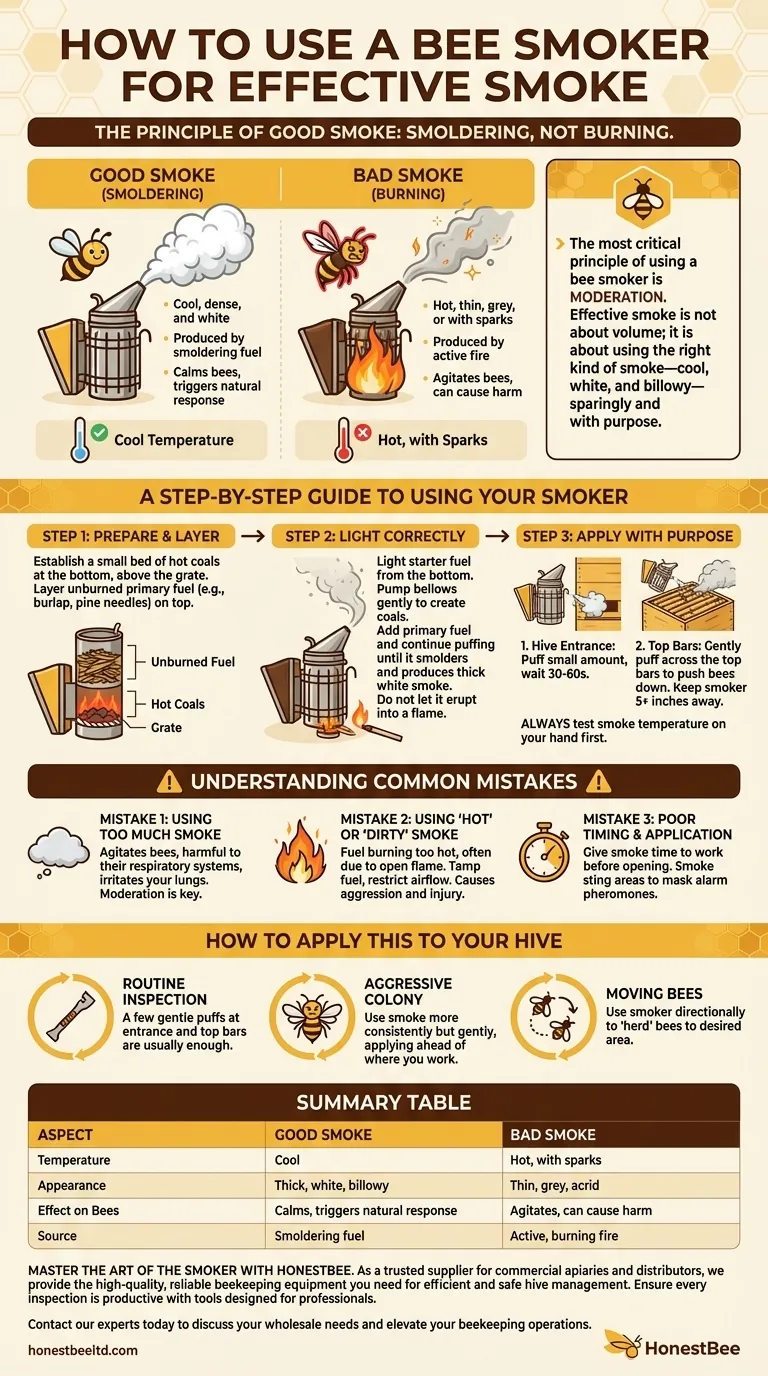
Related Products
- Premium Traditional Copper Bee Smoker with Bellows
- Stainless Steel Honey Bee Smoker Hive and Honeycomb Smoker for Beekeeping
- Stainless Steel Electric Beehive Smoker for Beekeeping and Bee Keeper Use
- European Stainless Steel Bee Smoker for Honey Bee Hive
- Economy Galvanized Beekeeping Honey Bee Smoker for Wholesale
People Also Ask
- What are the benefits of using smoke properly in beekeeping? Achieve Calm, Safe Hive Inspections
- What happens to bees when they sense smoke? Unlock the Secret to Calm Hive Inspections
- What are the main components of a bee smoker? A Guide to Safe and Effective Hive Management
- What is a Smoker and how is it used in beekeeping? The Essential Tool for Calm, Safe Hive Inspections
- What are the main parts of a bee smoker? Essential Components for Calm Hive Management






